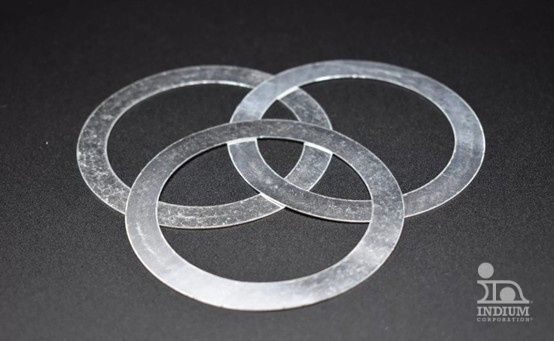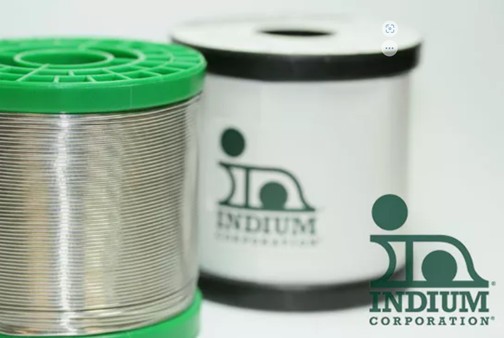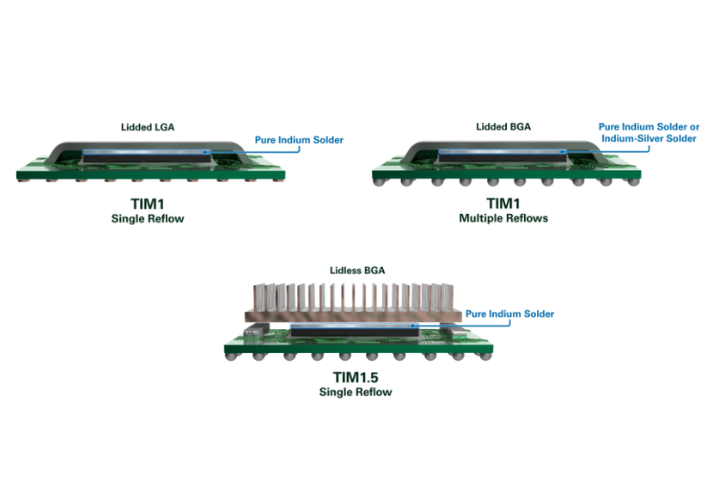Folks,
In today’s blog we will interview Pamela Nelson. She is a Product Specialist for Indium Corporation’s sealing

Figure 1. Product Specialist Pamela Nelson of Indium Corporation.
Dr. Ron:Pamela, can you tell us a little bit about yourself, where you are from, where you went to school, how you came about to work at Indium Corporation, etc.?
Pamela: Hi Dr. Ron, thanks for having me! I'm originally from Malaysia, and it’s been nearly a year since I began my journey as a Product Specialist at Indium Corporation in the Americas. I’ve really enjoyed working here, especially because of the company's welcoming culture and its focus on innovation!
I graduated with a Bachelor's ofSciencein Joint Mathematics and Economics from the University of California, San Diego. After completing my degree, I took on a temporary role as a Data Analyst with the Legal and Global Trade Compliance team at a Swiss multinational pharmaceutical company. That role gave me valuable experience in analytics and manufacturing processes within the life sciences industry.
Transitioning to Indium Corporation was made smoother thanks to my previous exposure to manufacturing, though I’ve found it interesting to shift from life sciences to electronics packaging. While the industries are different, the analytical skills and manufacturing experience I gained have been incredibly useful here.
Dr. Ron: How have you adjusted to life in the Northeast?
Pamela:I’ve adjusted to life here quite well. Iam grateful for the opportunity to experience different parts of the U.S. The West Coast definitely has a distinct atmosphere compared to the Northeast, from the landscape and weather to the food and culture. I’ve always enjoyed exploring new places, and this has been instrumental in broadening my horizons, feeding my curiosity, and contributing to my personal growth. Additionally, having had the privilege of living in different countries since childhood, I’ve developed a strong adaptability to new environments, which has made each transition smoother and more enriching.
Dr. Ron: Can you tell us about your role at Indium Corporation?
Pamela:I’m a Product Specialist responsible for overseeing indium products, particularly pure indium wires and Indium washers for sealing applications. Indium metal has been used a sealing material for many years and we continue to receive requests for materials and guidance on material selection. I enjoy helping customers use indium-based materials in sealing applications.
Dr. Ron: What are some of the more prominent applications for sealing?
Pamela: Indium has many unique properties which include softness, malleability, and the ability to form hermetic seals at room temperature while functioning effectively at ultra-low temperatures. Such properties open doors for numerous opportunities employing indium sealing such as cryogenic and ultra-low temperature applications, high-vacuum applications, the semiconductor and electronics industries, aerospace and defense applications, optoelectronics, medical devices anddiagnostics, as well as pressure sensors. I’ve outlined the applications of indium seals in each section below:
Cryogenic and Ultra-Low Temperature Applications
Indium seals are widely used in cryogenic systems, such as those in laboratories, aerospace, or superconducting applications. Because indium remains ductile and malleable even at extremely-low temperatures, it can maintain an effective seal where other materials would become brittle.
High-Vacuum Applications
Indium is used for sealing flanges in vacuum chambers, especially in research facilities and semiconductor manufacturing, where high and ultra-high vacuum conditions are required. The vacuum conditions needed for electron microscopes often use indium seals to maintain ultra-high vacuum required for precise imaging.
Semiconductor and Electronics Industry
Indium is used to hermetically seal delicate electronic and optical components, such as lasers, sensors, and photonic devices, which require protection from environmental exposure.

Figure 2. Indium washers used in sealing applications.
Aerospace and Defense Applications
The aerospace industry relies on indium seals for satellite components where the ability to form seals in a vacuum and withstand extreme temperature fluctuations is crucial. Besides this, indium is often used to hermetically seal sensitive instruments that need protection from moisture, dust, and pressure changes, which is critical in defense applications and high-altitude systems.
Furthermore, indium is used as a sealing material in ion thrusters, which are a type of spacecraft propulsion technology. The low vapor pressure and ability to create reliable seals in extreme environments make indium ideal for this purpose.
Optoelectronics
Indium is used in creating hermetic seals between glass or ceramic and metal components, which are commonly found in sensors, vacuum tubes, and other specialized electronic devices.
Medical Devices and Diagnostics
Sealing in Medical Imaging Equipment: Indium seals are used in medical imaging devices, such as MRI machines and other diagnostic equipment, which often require vacuum or low-pressure environments for sensitive sensors.
Implantable Medical Devices:Indium’s biocompatibility and malleability make it a good candidate forsealing electronic components in implantable medical devices, ensuring that they remain hermeticallysealed from bodily fluids.

Figure 3. Indium wire used in sealing applications.
Pressure Sensors
Indium seals are used in pressure sensors and transducers, where the hermetic sealing is critical toprotect the internal components form environmental contamination, pressure and temperature extremes.
Dr. Ron: Wow,Iwould not have believed there were that many sealing applications. However, why not use some of the less expensive sealing materials like plumber’s tape?
Pamela: While plumber’s tape is widely used for basic sealing applications in household plumbing, it is not suitable for many high-performance or specialized sealing tasks due to several key limitations when compared to materials like indium. Some notable situations where plumber’s tape fails are during extreme temperatures (either very high or very low), under high or ultra-high vacuum environments, in high-pressure systems, in situations where chemical resistance is critical, in applications requiring long-term durability and reusability, or during hermetic sealing for sensitive instruments or components.
Indium excels in performing over a much broader temperature range, from cryogenic temperatures (below −150°C) to relatively high temperatures. It stays ductile and can maintain a seal where other materials would become brittle or melt. Indium can withstand both high pressures and vacuum environments, is excellent for hermetic sealing in vacuum systems, reusable in many cases, highly corrosion-resistant, conforms to irregular surfaces, and is durable andlong-lasting even in harsh environments. While plumber’s tape is inexpensive and great for everyday use, it simply cannot meet the stringent requirements of high-performance applications where indium’s specialized properties are essential.
Dr. Ron:Pamela, thanks for an enlightening discussion on sealing materials.
Pamela:You are most welcome!
Cheers,
Dr. Ron



